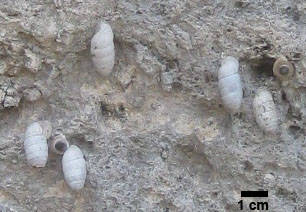|
Cerion Hessei
''Cerion hessei'' is a species of terrestrial gastropod in the family ''Cerionidae'' endemic to coastal areas near Balcón de Damas in Guardalavaca Guardalavaca is a town in the Holguín Province of Cuba. It is a tourist location due to its white sandy beaches and warm waters. Guardalavaca beach is protected by a large coral reef and is visited by both local Cubans and tourists. Most Cuban w ... beach area. Individuals from the type locality showed great variation in size, some individuals being among the smallest recorded in the genus. They are found only among coastal dwarf sea grape trees and in dry foliage in dunes. Some other nearby keys also possess dwarf '' Cerion'' species, however the reason is yet unknown.González-Guillén, Adrián; Fernández-Velázquez, Alejandro; Lajonchere-Ponce de León, Luis A.; Berschauer, David P. (February 2017). "Narrow-range taxa of Cerion (Mollusca: Cerionidae)in the northeastern province of Cuba". ''The Festivus''. 49: 3–17 – via Res ... [...More Info...] [...Related Items...] OR: [Wikipedia] [Google] [Baidu] |
Cerionidae
Cerionidae is a family of air-breathing land snails, terrestrial pulmonate gastropod mollusks in the superfamily Urocoptoidea. Pre-2008 taxonomy According to the taxonomy of the Gastropoda by Bouchet & Rocroi, 2005), the family Cerionidae is classified in the superfamily Orthalicoidea, within the informal group Sigmurethra, itself belonging to the clade Stylommatophora within the clade Eupulmonata. The family Cerionidae has no subfamilies. 2008 taxonomy Uit de Weerd (2008) moved the Cerionidae to the newly established superfamily Urocoptoidea based on molecular phylogeny research.Uit de Weerd D. R. (2008). "Delimitation and phylogenetics of the highly diverse land snail family Urocoptidae (Gastropoda, Pulmonata) based on 28S rRNA sequence data: A reunion with ''Cerion''". ''Journal of Molluscan Studies'' 74: 317–329. . Fossil record The oldest fossil cerionid is '' C. acherontis'' from the Upper Cretaceous Hell Creek Formation, in Montana, northwestern USA.Roth, B. & Hart ... [...More Info...] [...Related Items...] OR: [Wikipedia] [Google] [Baidu] |
Guardalavaca
Guardalavaca is a town in the Holguín Province of Cuba. It is a tourist location due to its white sandy beaches and warm waters. Guardalavaca beach is protected by a large coral reef and is visited by both local Cubans and tourists. Most Cuban workers in the all-inclusive hotels are transported daily in buses from neighbouring cities like Holguin, Banes, and Rafael Freyre, as only a few Cubans live in Guardalavaca due to the small size of the resort. Between Guardalavaca and Playa Esmeralda are dry tropical forest where endemic Cuban birdlife like hummingbirds Cuban emerald can be seen. Endemic Cuban knight anole lizards are numerous in these forest. A daily flea market is popular for handmade Cuban souvenirs and tourists from beaches further away from Guardalavaca centre like Playa Esmeralda and Playa Pesquero come here on excursion. A main tourist attraction is the Taino museum and museum village between Guardalavaca and Banes, and the wildlife trail at Bahia de Naranjo. B ... [...More Info...] [...Related Items...] OR: [Wikipedia] [Google] [Baidu] |
Cerion (gastropod)
''Cerion'' is a genus of small to medium-sized tropical air-breathing land snails, terrestrial pulmonate gastropods in the family Cerionidae, sometimes known as the peanut snails. The genus is endemic to the Caribbean region. The name ''Cerion'' is based on the Greek word ''kerion'', signifying honeycomb, and is given to these shells because the form of the shell resembles that of a beehive; hence they were at one time known as beehive shells.Baker F. C. (1903). ''Shells of land and water; a familiar introduction to the study of the mollusks''. Chicago, A.W. Mumford, page 48. The fossil range of ''Cerion'' is possibly from the Upper Cretaceous of Montana, or the early Miocene of Florida."''Cerion'': a web-based resource for ''Cerion'' research and identification" accessed 5 April 2011. ... [...More Info...] [...Related Items...] OR: [Wikipedia] [Google] [Baidu] |
Gastropods Described In 1949
The gastropods (), commonly known as snails and slugs, belong to a large taxonomic class of invertebrates within the phylum Mollusca called Gastropoda (). This class comprises snails and slugs from saltwater, from freshwater, and from land. There are many thousands of species of sea snails and slugs, as well as freshwater snails, freshwater limpets, and land snails and slugs. The class Gastropoda contains a vast total of named species, second only to the insects in overall number. The fossil history of this class goes back to the Late Cambrian. , 721 families of gastropods are known, of which 245 are extinct and appear only in the fossil record, while 476 are currently extant with or without a fossil record. Gastropoda (previously known as univalves and sometimes spelled "Gasteropoda") are a major part of the phylum Mollusca, and are the most highly diversified class in the phylum, with 65,000 to 80,000 living snail and slug species. The anatomy, behavior, feeding, and reproduct ... [...More Info...] [...Related Items...] OR: [Wikipedia] [Google] [Baidu] |

